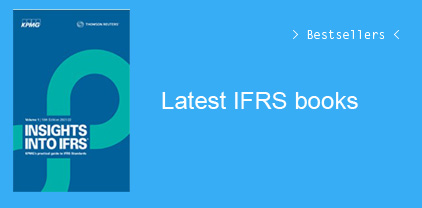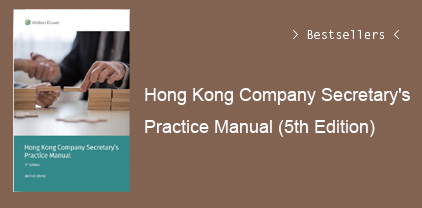Introduction 1
About This Book 1
Foolish Assumptions 2
Icons Used in This Book 3
Beyond the Book 3
Where to Go from Here 4
Part 1: Business Accounting Basics 5
Chapter 1: Business Accounting Fundamentals 7
Keeping the Accounting Equation in Balance 8
Distinguishing Between Cash- and Accrual-Basis Accounting 10
Summarizing Profit Activities in the Income (Profit & Loss) Statement 13
Assembling a Balance Sheet 15
Partitioning the Statement of Cash Flows 17
Tracing How Dishonest Accounting Distorts Financial Statements 20
Answers to Problems on Elements of Business Accounting 22
Chapter 2: Financial Effects of Transactions 27
Classifying Business Transactions 28
Seeing Both Sides of Business Transactions 30
Concentrating on Sales 33
Concentrating on Expenses 37
Determining the Composite Effect of Profit 40
Answers to Problems on Financial Effects of Transactions 43
Chapter 3: Getting Started in the Bookkeeping Cycle 51
Constructing the Chart of Accounts 52
Distinguishing Real and Nominal Accounts 55
Knowing Your Debits from Your Credits 58
Making Original Journal Entries 62
Recording Revenue and Income 64
Recording Expenses and Losses 66
Recording Set-Up and Follow-Up Transactions for Revenue and Expenses 70
Recording Investing and Financing Transactions 72
Answers to Problems on the Bookkeeping Cycle 74
Chapter 4: The Bookkeeping Cycle: Adjusting and Closing Entries 81
Getting Accurate with Adjusting Entries 82
Breaking Down the End-of-Year Adjusting Entries 84
Recording depreciation expense 84
Recording amortization expense 87
Recording other adjusting entries 88
Closing the Books on the Year 92
Instituting Internal Controls 94
Answers to Problems on the Bookkeeping Cycle 97
Chapter 5: Accounting in the Digital Age 105
Keeping a Few Foundational Accounting Concepts in Mind 106
Using Accounting Software and the Services of an Expert 109
Controlling and Protecting Money Flows in the Electronic Age 111
Processing payroll 112
Monitoring bank accounts 112
Surveying bank forms of electronic payments 113
Checking out non-bank forms of electronic payments 113
Using enhanced accounting controls 114
Managing the Accounting Function in the On-Demand World 117
Source documentation 117
Data rooms 117
Financial reporting 118
Flash reports, dashboards, and KPIs 118
Accounting and financial analysis tools 119
Answers to Problems on Accounting in the Digital Age 121
Part 2: Preparing Financial Statements 123
Chapter 6: Understanding Basic Accounting Concepts and Methods 125
Touching on Basic Accounting Theories and Concepts 126
Providing Some Examples of Choosing Accounting Methods 128
Getting Off to a Good Start 129
Determining Whether Products Are Unique or Fungible 133
Contrasting Cost of Goods Sold Expense Methods (for Fungible Products) 133
Averaging things out 135
Going with the flow: The FIFO method 137
Going against the flow: The LIFO method 138
Appreciating Depreciation Methods 140
Timing Bad Debts Expense 143
Answers to Problems on Choosing Accounting Methods 147
Chapter 7: The Effects and Reporting of Profit 155
Understanding the Nature of Profit 156
Keeping standards of reporting in mind 156
Following profit 157
Choosing the Income Statement Format 158
Deciding on Disclosure in the Income Statement 161
Examining How Sales and Expenses Change Assets and Liabilities 163
Summing Up the Manifold Effects of Profit 168
Answers to Problems on the Effects and Reporting of Profit 172
Chapter 8: Reporting Financial Condition in the Balance Sheet 179
Getting Started on the Balance Sheet 181
Building a Balance Sheet 185
Fleshing Out the Balance Sheet 188
Clarifying the Values of Assets in Balance Sheets 193
Answers to Problems on Reporting Financial Condition in the Balance Sheet 197
Chapter 9: Coupling the Income Statement and Balance Sheet 205
Rejoining the Income Statement and Balance Sheet 206
Filling in Key Pieces of the Balance Sheet from the Income Statement 209
Putting Fixed Assets in the Picture 214
Completing the Balance Sheet with Debt and Equity 215
Answers to Problems on Coupling the Income Statement and Balance Sheet 218
Chapter 10: Reporting Cash Flows and Changes in Owners’ Equity 223
Figuring Profit from the Balance Sheet 224
Reporting the Statement of Changes in Stockholders’ Equity 227
Determining Cash Effect from Profit Generating Activities 229
Presenting the Statement of Cash Flows 232
Reporting cash flows 233
Connecting balance sheet changes with cash flows 235
Answers for Problems on Reporting Cash Flows and Changes in
Owners’ Equity 239
Part 3: Managerial, Manufacturing, and Capital Accounting 245
Chapter 11: Analyzing Profit Behavior 247
Mapping Profit for Managers 248
Analyzing Operating Profit 251
Analysis method #1: Contribution margin minus fixed costs 251
Analysis method #2: Excess over breakeven 252
Analysis method #3: Minimizing fixed costs per unit 253
Analyzing Return on Capital 257
Improving Profit Performance 260
Selling more units 260
Improving margin per unit 262
Answers to Problems on Analyzing Profit Behavior 266
Chapter 12: Tackling Managerial Cost Accounting 275
Minding Manufacturing Costs 276
Product costs 277
Period costs 278
Separating period and product costs 278
Taking a Short Tour of Manufacturing Entries 280
Calculating Product Cost: Basic Methods and Problems 284
Connecting fixed manufacturing overhead costs and production capacity 285
Boosting profit by boosting production 287
Calculating Product Cost in Unusual Situations 291
Answers to Problems on Manufacturing Cost Accounting 297
Chapter 13: Business Planning and Raising Capital 309
Starting with the Business Plan 310
Realizing the Importance of Business Forecasts 313
Getting a grip on how forecasting works 313
Gaining insight into forecasting terms 314
Identifying Types of Available Capital 316
Utilizing equity to capitalize your business 317
Leveraging debt to finance business operations 326
Noting key points in raising capital 330
Answers to Problems on Managing Business Capital 332
Part 4: The Part of Tens 337
Chapter 14: Ten Things You Should Know About Business Financial Statements 339
Rules and Standards Matter 340
Exactitude Would Be Nice, but Estimates Are Key 340
Financial Statements Fit Together Hand in Glove 341
Accrual Basis Is Used to Record Profit, Assets, and Liabilities 342
Cash Flow Differs from Accrual Basis Profit 342
Profit and Balance Sheet Values Can Be and Often Are Manipulated 343
Financial Statements May Be Revised Later to Correct Errors and Fraud 344
Some Asset Values Are Current, but Others May Be Old 344
Financial Statements Leave Interpretation to Readers 345
Financial Statements Tell the Story of a Business, Not Its Individual Shareowners 345
Chapter 15: A Ten-Point Checklist for Management Accountants 347
Designing Internal Accounting Reports 348
Helping Managers Understand Their Accounting Reports 349
Involving Managers in Choosing Accounting Methods 349
Designing Profit Performance Reports for Managers 350
Designing Cash Flow Reports for Managers 350
Designing Management Control Reports 351
Developing Financial Forecast Models for Management Decision-Making Analysis 351
Working Closely with Managers in Planning 352
Establishing and Enforcing Internal Controls 353
Staying Current in the Digital Age and Global Economy 353
Index 355

































